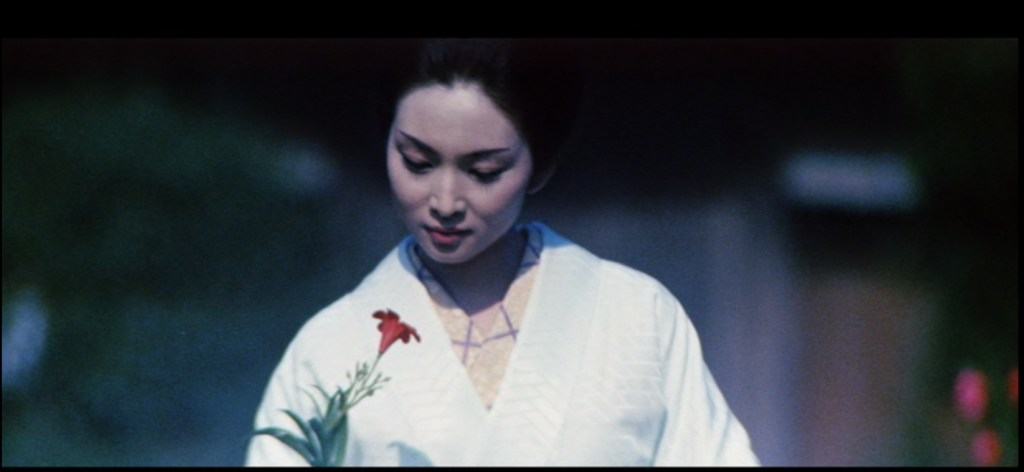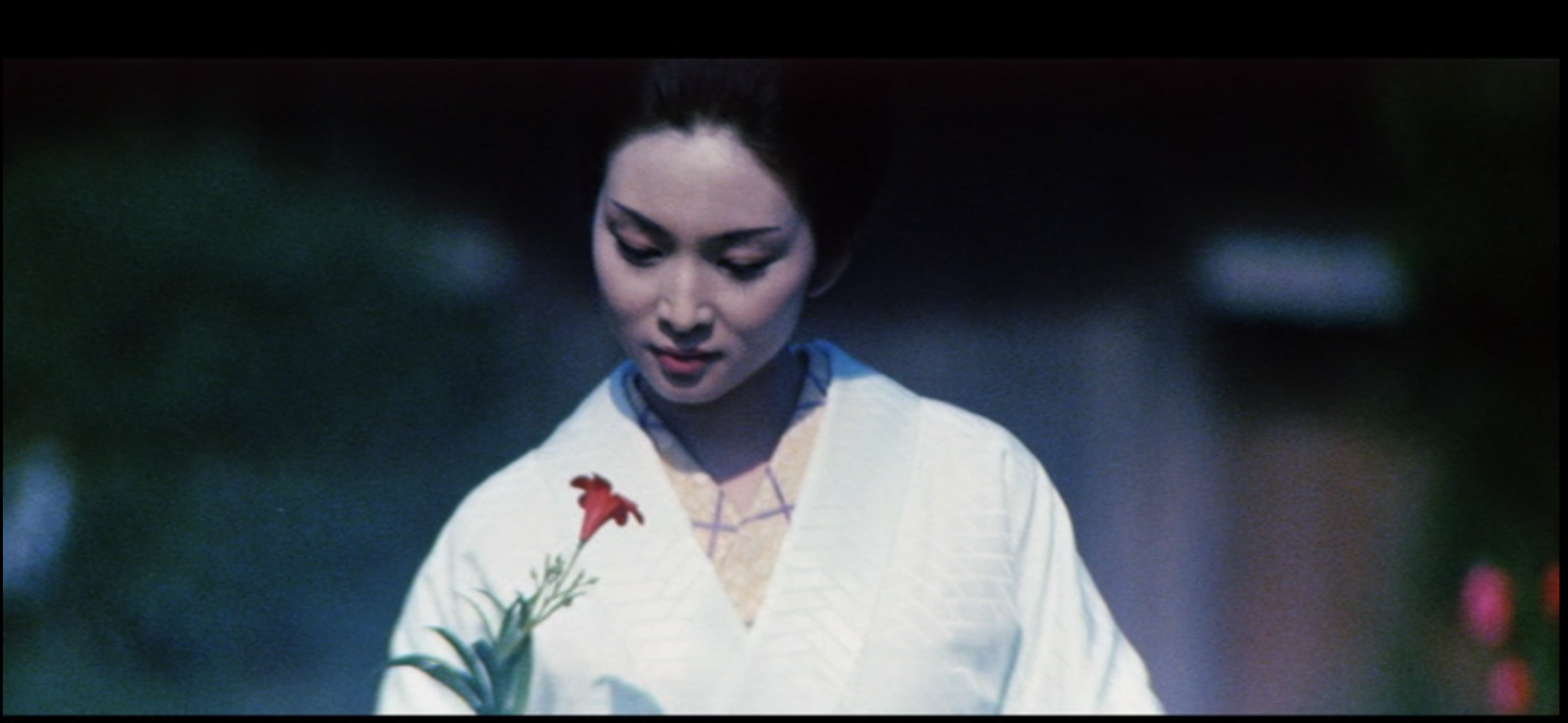Movie Review: Lady Snowblood (1973) directed by Toshiya Fujita
Yuki (Meiko Kaji) was born in prison, the result of her mother Sayo (Miyoko Akaza) seducing multiple guards in order to get pregnant. Sayo’s husband and son had been murdered, and herself raped and tortured, by four criminals as a byproduct of the criminals’ scheme to defraud their fellow villagers of a small fortune. After the gang broke up, one of the criminals kept Sayo with him as a slave, only to have her murder him the moment his guard was down. Confined to prison for the rest of her life, Sayo decided to have a child who could pursue her vengeance.

Twenty years later, we catch up with Yuki, now an assassin under the trade name Shurayuki-hime (the “Lady Snowblood” of the title.) She takes out a gangster that’s been trying to extort the Beggars’ Clan on behalf of clan chief Matsuemon (Hitoshi Takagi) in exchange for him using his connections to track down the remaining three criminals, Banzo Takemura (Noboru Nakaya), Okono Kitahama (Sanae Nakahara) and Gishiro Tsukamoto (Eiji Okada).
Banzo’s fairly easily found as he’s wasted his money and become an alcoholic gambler whose daughter Kobue (Yoshiko Nakada) has to work as a prostitute to support him. But Gishiro’s trail ends at his tombstone (lost at sea) and Okono seems to have vanished. In frustration, Yuki lashes out at the tombstone, attracting the attention of muckraking journalist Ryurei Ashio (Toshio Kurosawa). He gets Yuki’s backstory from the priest Dokai, who trained her in the ways of combat, and becomes her ally.
This leads to a confrontation with Okono, but will Ryurei’s own secrets doom both himself and Lady Snowblood?
This movie is loosely based on the manga of the same title by Kazuo Koike and Kazuo Kamimura. It trims out most of the side missions Yuki goes on for cash, all of the lesbian encounters and simplifies the main plot a bit for time and closure. This gets it down to a reasonable 97-minute runtime. But there’s still room for flashbacks and some interesting juxtaposition of live action and manga graphics. I especially liked the theatrical “fake ending” complete with dropping curtain.
The standout performance is by Meiko Kaji as the title character. Her penetrating stare sells Yuki as someone who has only vengeance on her mind, but isn’t crazy about it, being instead methodical and enjoying small moments of beauty or kindness when she can have them.
I liked the rich use of color, and am impressed that the director managed to bring this film to completion on time and on budget, with a minimum number of retakes.
The Criterion Edition version I watched came with interviews of both Koike, the manga’s writer, and Norio Osada, the film’s writer. Koike mentions that the series was his first time writing a female protagonist, and that ruthless female assassins were rare as a character type in manga back in the 1970s. Osada meant his script to be a done-in-one standalone movie (the ending is ambiguous as to whether Yuki survives) but warmed to the idea of a series when he saw how well the sequel did. And then there was no series.
Content note: As expected of a samurai revenge drama, lots of violence, with spurting blood and mutilation. Rape, but also consensual on-screen sex (clothed). Brief female nudity in a non-sexual context. Alcohol abuse. Prostitution. What is either a gang of corrupt police officers or a gang impersonating corrupt police officers torture a prisoner. Suicide.
Overall: A compelling, well-made film that I am not surprised has a loyal fan following. The violence and rape, however, mean it’s definitely not for everyone.

